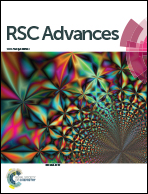Biocatalytic approach on the treatment of edible oil refinery wastewater
Abstract
The number of edible oil refineries has increased in the last few years, with a corresponding increase in oil production. As a result, edible oil-containing wastewater (EOCW) is being produced in huge quantities. Conventional technologies are inefficient at treating this wastewater due to the highly hydrophobic nature of the lipids. In the present study, we have used lipase immobilized nanoporous activated carbons and surface functionalized nanoporous activated carbons for the treatment of lipid-containing wastewater. The nanoporous activated carbon (NAC) was prepared from rice husks and the NAC was surface functionalized by the addition of ethylenediamine and glutaraldehyde with (FNAC2) and without (FNAC1) the addition of a reducing agent, sodium borohydride. The lipase obtained from marine Pseudomonas otitidis, using cooked waste sunflower oil (CWSO) as the substrate, was then immobilized onto the NAC and the functionalized nanoporous activated carbons (FNAC1 and FNAC2). The maximum immobilization capacities of NAC, FNAC1 and FNAC2 were 3640, 4788 and 4400 U g−1, respectively, at the optimum conditions. The carrier matrices in the free and lipase immobilized form were characterized using scanning electron microscopy, Fourier transform infrared spectrometry and X-ray diffraction. The thermal behavior of the free and immobilized lipases was studied using thermogravimetric analysis. Michaelis–Menten enzyme kinetics, adsorption isotherms and nonlinear kinetic models were evaluated for the immobilization of lipase. The lipase immobilized carrier matrices were employed in the treatment of EOCW under batch and continuous mode operations. At the end of the 50th cycle, FNAC1-L (89.78%) showed a higher operational stability than FNAC2-L (87.36%) and NAC-L (76.59%). The treatment of EOCW by immobilized lipases followed the pseudo second order rate kinetic model.


 Please wait while we load your content...
Please wait while we load your content...